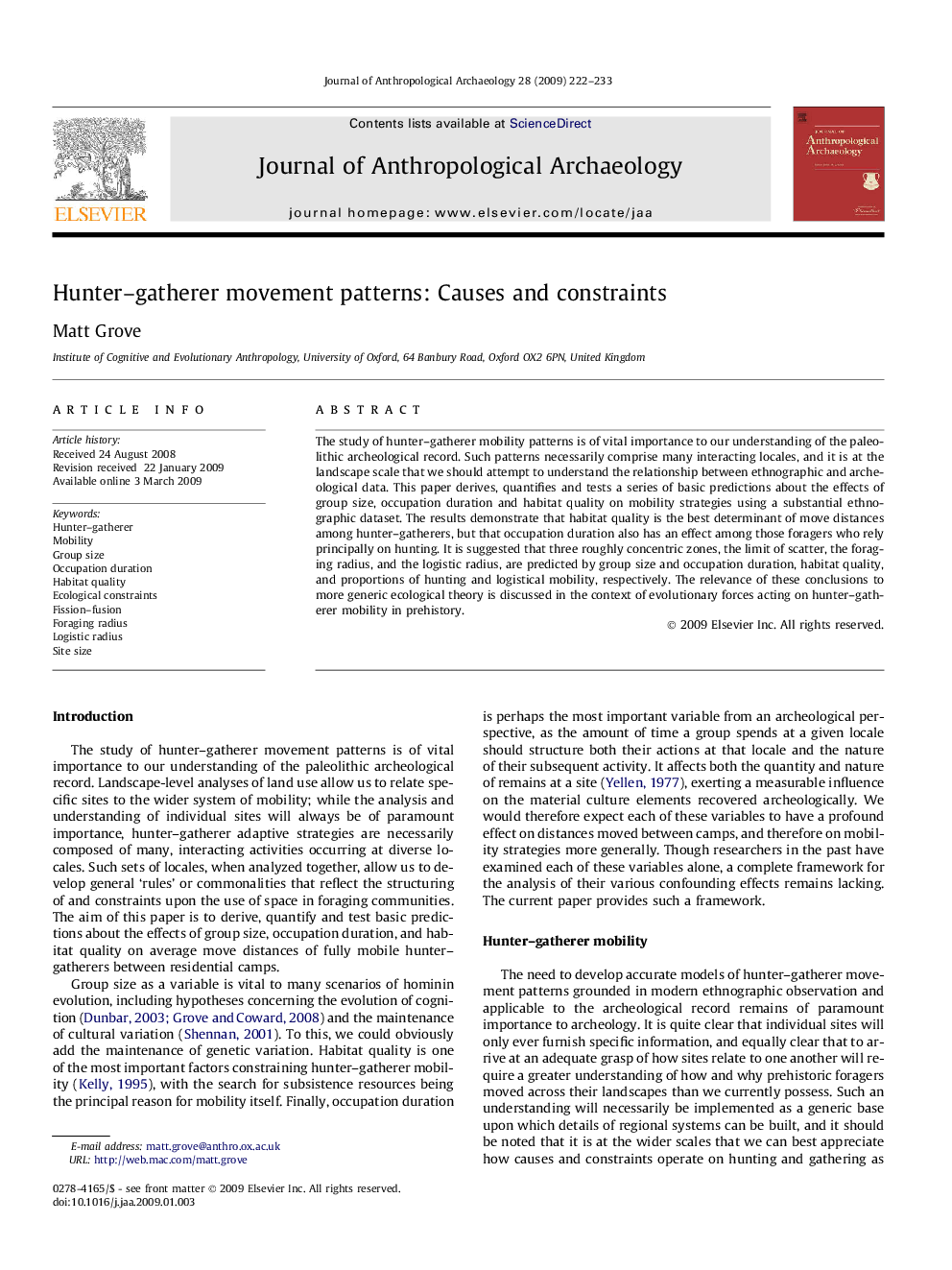| Article ID | Journal | Published Year | Pages | File Type |
|---|---|---|---|---|
| 1035173 | Journal of Anthropological Archaeology | 2009 | 12 Pages |
The study of hunter–gatherer mobility patterns is of vital importance to our understanding of the paleolithic archeological record. Such patterns necessarily comprise many interacting locales, and it is at the landscape scale that we should attempt to understand the relationship between ethnographic and archeological data. This paper derives, quantifies and tests a series of basic predictions about the effects of group size, occupation duration and habitat quality on mobility strategies using a substantial ethnographic dataset. The results demonstrate that habitat quality is the best determinant of move distances among hunter–gatherers, but that occupation duration also has an effect among those foragers who rely principally on hunting. It is suggested that three roughly concentric zones, the limit of scatter, the foraging radius, and the logistic radius, are predicted by group size and occupation duration, habitat quality, and proportions of hunting and logistical mobility, respectively. The relevance of these conclusions to more generic ecological theory is discussed in the context of evolutionary forces acting on hunter–gatherer mobility in prehistory.
